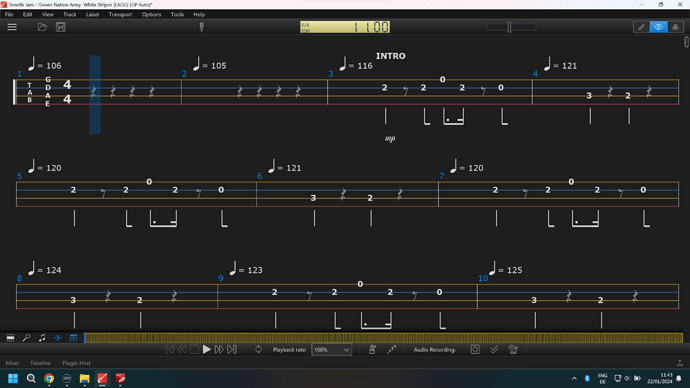“Seven Nation Army” by The White Stripes is an iconic riff, instantly recognizable and a staple for guitar players of all levels. If you’re learning it, you’ve likely searched for a “Seven Nation Army Guitar Tab”. But have you noticed variations in those tabs? You might find some versions feel awkward to play compared to others. Let’s dive into why some tabs are better than others, using “Seven Nation Army” as a perfect example.
The “Josh” Approach to Guitar Tabs: Prioritizing Playability
Experienced guitar instructors, like “Josh” (presumably from the original forum context), often create tabs that prioritize efficient finger positioning. This means focusing on minimizing hand movement and keeping your fretting hand comfortable. Instead of always staying on the same string, these optimized tabs encourage you to shift strings to keep your fingers closer together. This approach generally leads to smoother transitions and faster playing.
“Seven Nation Army” Tab Example: Downloaded vs. Optimized
Let’s look at “Seven Nation Army” to illustrate this point. A typical downloaded guitar tab might look something like this:
 Downloaded Seven Nation Army Guitar Tab Example
Downloaded Seven Nation Army Guitar Tab Example
In this tab, notice how the D5 note is played on the A string at the 10th fret (A10). This is perfectly playable, but it requires a bigger jump with your left hand compared to an optimized version.
Now, compare that to a more optimized tab, focusing on efficient finger placement:
Here, the D5 is played on the open D string (D5). This keeps your hand in a much more compact position, making the riff easier and faster to play repeatedly. The difference might seem subtle, but it significantly impacts playability, especially for beginners.
Guitar Pro’s Automatic Tab Feature: Proceed with Caution
Even software like Guitar Pro, with its automatic finger positioning feature, doesn’t always get it right. Sometimes, it might suggest using open strings when a fretted note on a different string would be more practical, as shown in this Guitar Pro example:
 Guitar Pro Automatic Finger Positioning Example for Seven Nation Army Tab
Guitar Pro Automatic Finger Positioning Example for Seven Nation Army Tab
While keeping frets close together, using the open G string (G0) for the D note can sometimes be problematic. The open G might sound slightly different in tone, and for some players, the open G string can be accidentally muted by the fretting hand.
Optimizing Your “Seven Nation Army” Guitar Tabs (and Beyond)
So, how can you optimize your “seven nation army guitar tab” and other tabs for better playability? Here are a few rules of thumb, inspired by the “Josh” approach:
- Minimize Hand Movement: Look for opportunities to keep your fretting hand in a smaller, more efficient position.
- Utilize String Changes: Don’t be afraid to move between strings to play the same note if it allows for smoother transitions.
- Consider Open Strings (Wisely): Open strings can be useful, but be mindful of potential tonal differences and playability issues.
- Experiment and Trust Your Ears: Ultimately, the best tab is the one that sounds right and feels comfortable for you to play.
By understanding these principles, you can not only master the “seven nation army guitar tab” but also become more discerning in choosing and even creating guitar tabs that enhance your playing experience. Happy riffing!
